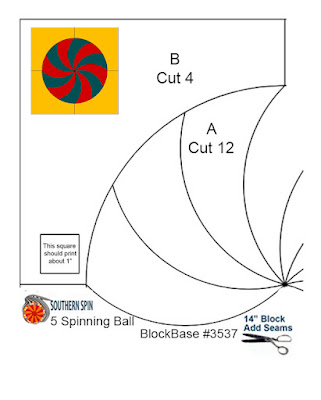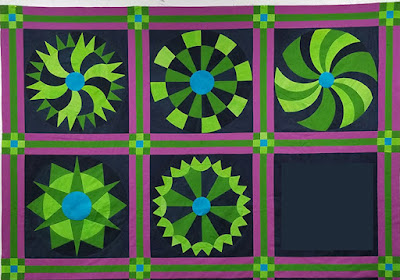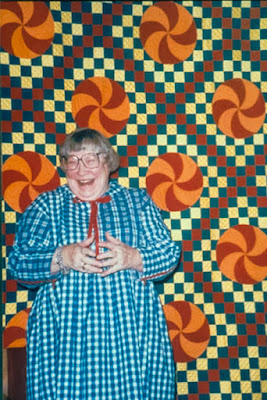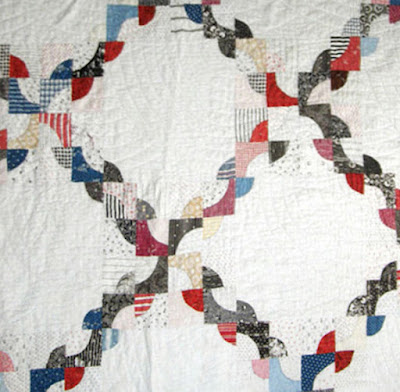QUILTS & FABRIC: PAST & PRESENT
Sunday, July 31, 2022
Southern Spin #5 Spinning Ball
Wednesday, July 27, 2022
Feed Sack Prints? 1938
In 1938 photographer John Vachon (1914-1975) came to Kansas to take pictures of farmers and their lives for the Farm Security Administration. He recorded this man in Topeka sitting among some of what looked to me like polka dot feed sacks.
"I didn't know it at the time, but I was having a last look at America as it used to be." John Vachon
The photos are wonderful in themselves and the Kansas history is interesting, but I liked the pair of pictures because they seemed to show dress print sacks in photos dated 1938, adding to evidence of a late-1930s date for the advent of these fabric containers. See a post on the 1938 invention:
https://barbarabrackman.blogspot.com/2022/04/milestones-in-textile-history-richard.html
But I am not knowledgeable about the subtleties of commodity containers. Gloria Nixon is one of the top authorities. She commented on the Rees photo:
"I feel those aren't dress prints. [See] Crete Mills/Victor Feed letterhead from 1930 and 1934 showing some of its bags. Now look at the Jack Rees photo. From the little I've found, Crete Mills used a motif corresponding to the feed the bag held: pigs, chicks, eggs, etc., throughout the 1930s. Victor Flour is the product I would expect to see packaged in pretty dress prints around 1938."
I guess what I thought was a polka dot is an egg. I opined that the piggy print would make a cute child's garment. But sez Gloria....
"The labels took up most of the cloth anyway, front and back. There would be little fabric to use for anything."
So Mr. Rees is indeed selling feedsacks but not the kind with the dress prints that we are so familiar with. The Victor feed containers predate the usual dress print sacks. And that's why the Facebook groups are so useful---group think. Fine points discussed. Experts chiming in.
Friday, July 22, 2022
Drunkard's Path Snowballing Along
Monday, July 18, 2022
Unlicensed Artists
Do not try this at home. Buy a professionally drawn pattern if you MUST indulge in cuteness.
Thursday, July 14, 2022
Circle Saw Variation
Another option: Six petals. This tattered Georgia quilt, circa 1900, found inside another quilt and used as batting, attributed to Mary Ann Seagrave Clements (1844-1910) and daughter Ella Dennis in Fulton County where Atlanta is. Newer style conventions, partial blocks on the side and triple strip sashing.




%20ebayoutof%20JasperGA.jpg)































.jpg)



.jpg)

.jpg)
.jpg)

.jpg)

.jpg)






























